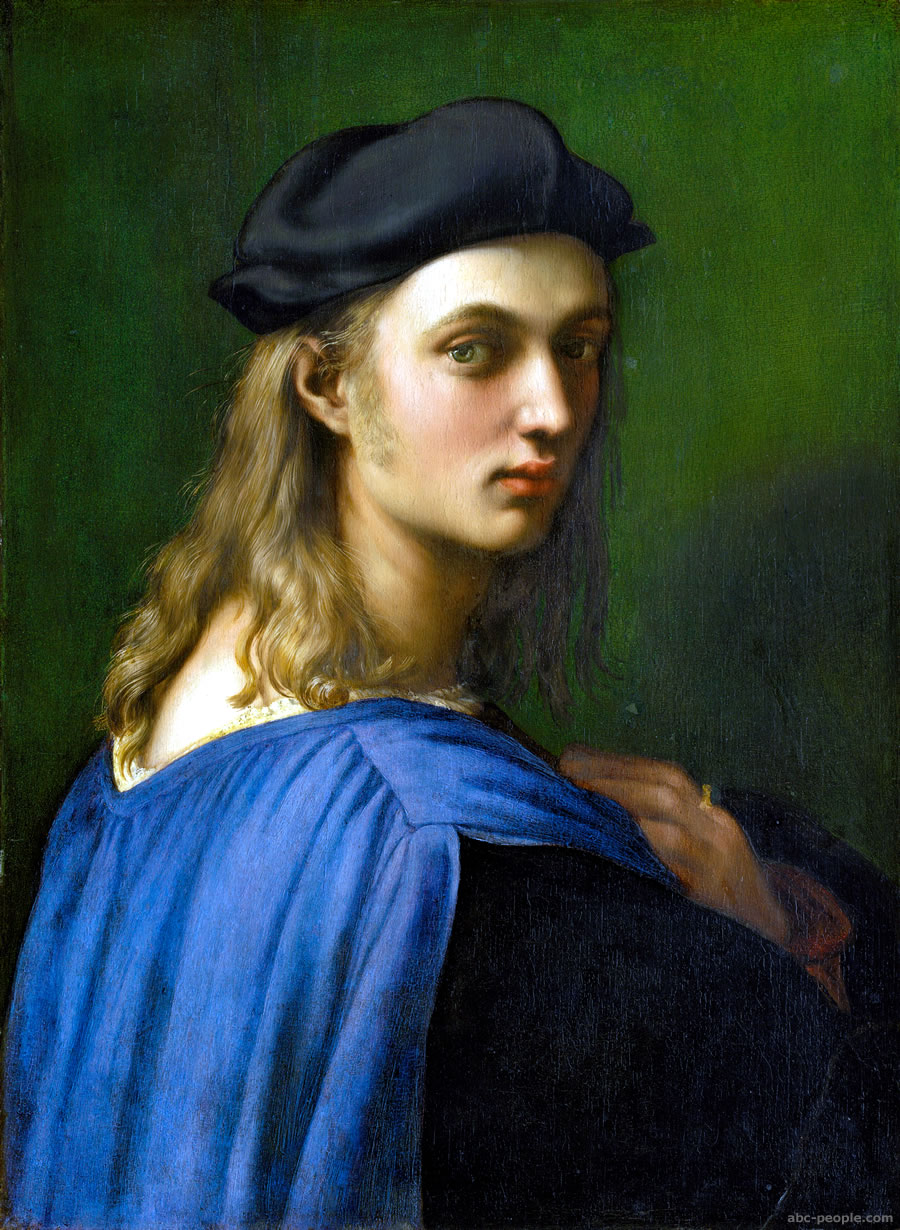| Raphael's
Masterpieces |
|
Ritratto
di Bindo Altoviti |
| Portrait
of Ritratto di Bindo Altoviti by Raphael |
| The
Portrait of Bindo Altoviti is a painting finished around 1515 by the
Italian High Renaissance painter Raphael. It is housed in the National
Gallery of Art of Washington, D.C., United States.
Bindo Altoviti was a rich banker born in Rome in 1491, but of Florentine origin. He was a cultured man who liked the arts. The graceful, almost effeminate position of the subject along with the heavy contrast between light and shadow are atypical of Raphael's work, particularly of his portraits of men, demonstrating the artist's experimentation with different styles and forms in his later Roman period. The influence of the works of Leonardo, which Raphael studied astutely during this period of his career, is strikingly evident in this particular piece. The painting was a property of Altoviti’s
descendants until 1808, when it was sold to Ludwig I of Bavaria.
It remained at the Alte Pinakothek until 1936, when, after many
debates about its attribution, the painting was lured out of Nazi
Germany by "canny English dealers".[1] Acquired by Samuel
Henry Kress, the portrait subsequently became property of the National
Gallery of Art in Washington, D.C. |
Bindo Altoviti - National Gallery of Art This arresting image was thought in the nineteenth century to be a Raphael self-portrait. However, we know today that this handsome young man was Bindo Altoviti, a wealthy Florentine banker and friend of the artist in Rome. He turns in a dramatic, almost theatrical, way to fix the eye of the viewer. Perhaps one viewer in particular was meant to receive his captivating look: Bindo's wife Fiammetta Soderini. Renaissance poets and courtiers were unanimous in believing that a person first fell in love through the eyes. They were called the "guides of love," which could "reveal the passion within more effectively than the tongue itself, or letter, or messengers." Bindo's flushed cheeks contribute to the impression of passion, and a ring is prominent on the hand he holds above his heart. The robe slipping from his shoulder reveals a bare nape caressed by soft curls. Their golden color would have underscored the nobility and purity of his love. Bindo and Fiammetta,
daughter of a prominent Florentine family, were married in 1511,
when Bindo would have been about twenty. The couple had six children,
but Fiammetta continued to live in Florence while Bindo's business
with the papal court required his presence in Rome. This portrait,
which apparently hung in the couple's home in Florence, would have
provided Fiammetta with a vivid reminder of her absent husband.
It remained in the Altoviti family for nearly three hundred years. |
| |
|
| Copyright
© 2004 abc-people.com Design and conception BeStudio © 2014-2023 |

